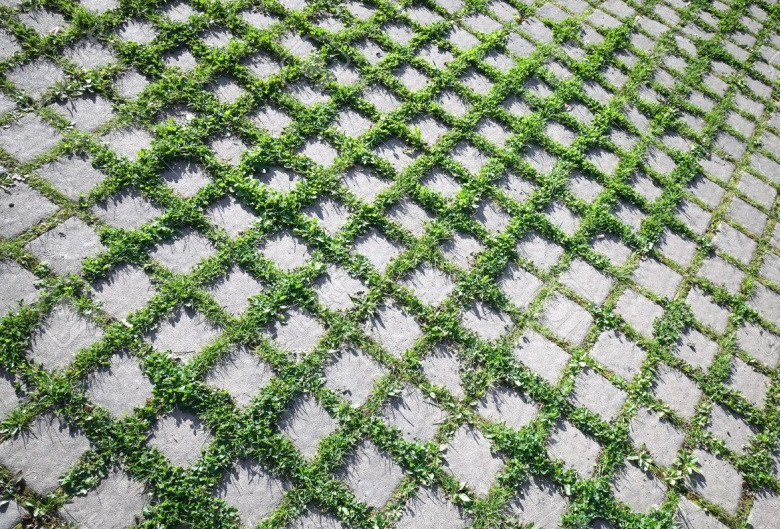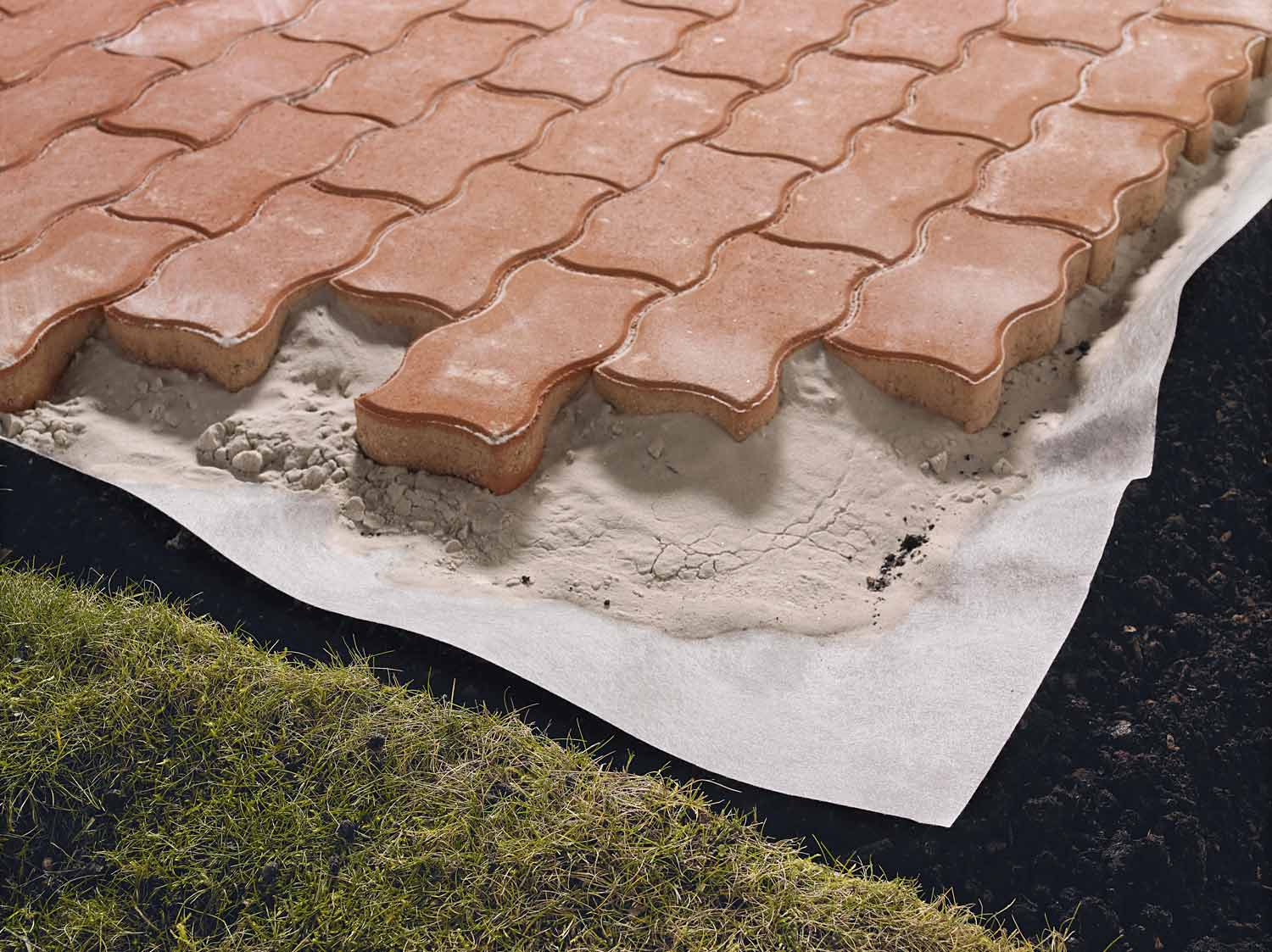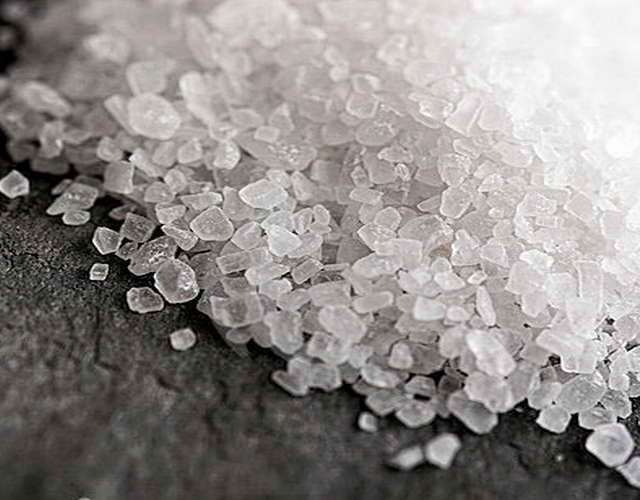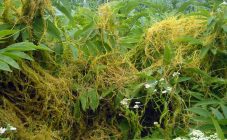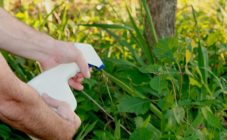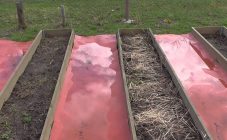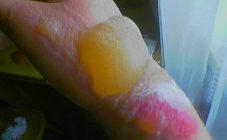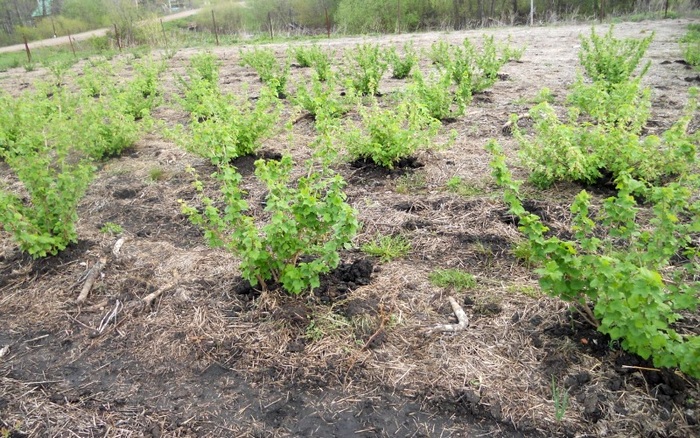Content:
Paving slabs are modern facing materials that have replaced asphalt. Streets, aisles, courtyards and playgrounds are paved with it. The tile is easy to keep clean, this coating has practically no drawbacks. However, one nuisance can spoil the mood of the owner of a site covered with such material. These are plants growing through the joints between tiles.
How to deal with grass in paving slabs
Best defense is attack. It is best to prevent vigorous plant growth between the tiles at the initial stage, that is, before the site is tiled. To do this, when preparing a substrate for a track or site, geotextile material is used.
Geotextile backing
Geofabric is different in composition and density. For tiled flooring, it is recommended to use a material consisting of 100% polypropylene. Its density varies from 120 to 300 g / m². The least dense matter is enough for footpaths. For highways or parking spaces, a substrate with a maximum density of at least 250 g / m² should be used.
It is necessary to lay the fabric in 2 layers. The first layer is placed directly on the ground. It will protect the sidewalk from groundwater and weed germination. The second time, the geotextile is laid on the rubble, sand is poured on top, on which the tiles are laid. In this case, the fabric acts as a reinforcing material that does not allow the pillow to deform and disturb the evenly laid row of paving slabs.
Such material appeared on the building materials market relatively recently. Before him, they tried to prevent the germination of plants in different ways: they laid a plastic wrap, made a pillow of rubble, a concrete screed. All these preventive measures make it possible to delay the appearance of vegetation on the sidewalk mosaic for a sufficiently long period.
What to do if the track was laid for a long time
Not all sites were prepared using the correct technology. This is especially true of those early objects that were faced with paving slabs even before the problem of germinating plants became relevant. The early installers sincerely believed that a layer of sand was sufficient to prevent grass from growing between the tiles.
The sidewalk path, through the seams of which the grass grows, has an abandoned, unkempt appearance. This must be fought. And there are a lot of effective means for killing the weed. Here are some of these options:
- Roundup. A powerful chemical that can poison all living things. It is very popular with summer residents, because one treatment is enough for the entire season. When working with a chemical, safety precautions must be followed. There is one more unpleasant moment - "Raudap" is able to destroy not only the grass on the path, but also the vegetation near it. Therefore, this remedy for grass between the tiles should not be used if there are flower beds nearby. There are various analogues: "Glyfogan", "Hurricane" and others.
- Herbicides. Not so poisonous drugs. You can prepare the solution yourself. For this, 1 part of sulfur, 6 parts of lime and 60 parts of water are taken. After stirring the mixture, you can immediately pour it between the joints of the tiles.The effect will not be long in coming - there will be no new weeds until at least next year.
- Ammonium nitrate. It is diluted 1-1.2 kg per bucket of water and poured into the cracks. After 5 days, the procedure must be repeated.
- Bura. Dilute 0.3-0.4 kg in 10 liters of water and process in the same way as with saltpeter. Borax also helps to get rid of ants.
The above options are radical methods. Any radical method must be applied after weeding and before the weed matures and yields seeds. This will interrupt the natural cycle of plant development and, possibly, prevent the emergence of the next year.
You can also try patching the seams. As an option for grouting, mix equal parts of cement and sand, dilute with water to a consistency resembling sour cream, and wipe the seams with this solution. First you need to weed the grass. If the joints between the tiles are wide enough, then another mixture can be used, where fine gravel is used instead of cement (screening is better).
How to get rid of sprouted grass
If the grass nevertheless sprouted in a thick wall through the path, then it must be removed. By the word "removal" is meant elementary weeding. It is best to pull up weeds after rain when the ground is damp. Grass roots are easily pulled out of such soil and removing weeds will not seem like hard work.
Boiling water, which needs to be watered 3-4 times at the joints of the tiles, can serve well in the fight against sprouted grass. This method of weed control is the cheapest, but no less effective. A significant drawback is that very soon new growth appears and the operation has to be repeated.
Some owners use a gas burner to get rid of the grass between the tiles. Such an extreme method is extremely undesirable due to the fact that the flame can damage the tile itself. Perhaps the first time, fatal changes will not be noticeable, but over time, the tile will begin to collapse. It is not worth getting rid of weeds at such a cost when there are other ways.
How to get rid of grass between paving slabs with folk remedies
The ingredients of these folk remedies can be found in every kitchen.
Saline solutions are effective but short-lived. A 20% mixture will delay plant development, but the first rain can wash it off. Therefore, if the season is rich in rainfall, a salt-based recipe is completely inappropriate. In addition, salt, like baking soda washed away by rain, can harm crops.
Vinegar-based products are preferred for weed control. There are many recipes. Some of them are listed below:
- Mix 4 liters of 9% vinegar with 100-120 g of salt and a tablespoon of detergent.
- To 400 g of vinegar add 50 g of alcohol, 3 tablespoons of citric acid and dilute with water 1: 1.
- Mix vinegar with a solution of laundry soap in a 1: 1 ratio. It is worth dwelling on this recipe a little, since it is the simplest and most effective. Soapy water helps the acid penetrate deep into the soil and burn the roots of the weeds there. After such treatment, the shoots on the track will not appear for 3-4 years.
Moss control on paving stones
Paving stones are a separate type of road surface that has exclusively rectangular shapes. But not only in forms it differs from paving slabs. Its main differences are that:
- In its manufacture, polymer and rubber materials are never used.
- Made from fired clay or high strength concrete, it has much better strength values.
- In height, it is much larger than a tile, although in terms of external dimensions it is much inferior to it.
Cobbled pavements have been known for a very long time. Yards made of this material are still preserved near some of the old houses.
Many of the paving stones are covered with a layer of moss. Gradually, moss destroys the road surface, so it must be dealt with. How to get rid of moss and grass on paving stones:
- Remove all overgrowth. If this is grass, then it must be weeded out, if the moss is removed mechanically using a metal brush or a nozzle on a grinder.
- Treat stones with a 10% solution of copper sulfate. Other options are possible, for example, a mixture of borax and boric acid. There are store-bought chemicals that can remove lichen. A good remedy is Anti Mousses Guard.
- After completing the cleaning procedure, wash each paving slab with soapy water. This is necessary in order to stop the action of aggressive chemicals, as well as to prevent the process of rotting of dead plants from starting in the porous surface of the paving stone.
How to keep an eye on paving slabs
The sidewalk path, like any other structure, requires attention. So that there are no questions in the future how to remove the grass between the paving slabs, you need to adhere to simple rules:
- Do not drive your car on pedestrian paths.
- Do not drop heavy objects onto the paving slabs.
- Do a periodic inspection of the condition of the seams and, if necessary, rub them.
- Fight weeds and anthills that destroy the road surface.
- In warmer months, sweep with a soft broom; in winter, remove snow with a wooden or plastic shovel.
In conclusion, it is worth repeating that the fight against weeds on the sidewalk will not only prolong the life of the pavement, but also allow you to get aesthetic pleasure from the look of a well-groomed, tidy yard.
